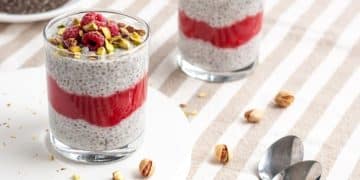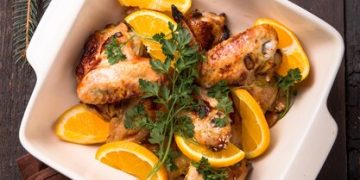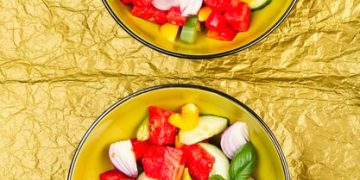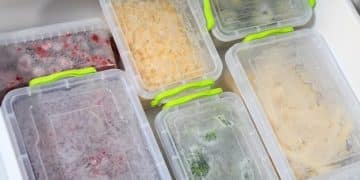7-Day Meal Plan for Weight Loss: Your Balanced Guide for 2025
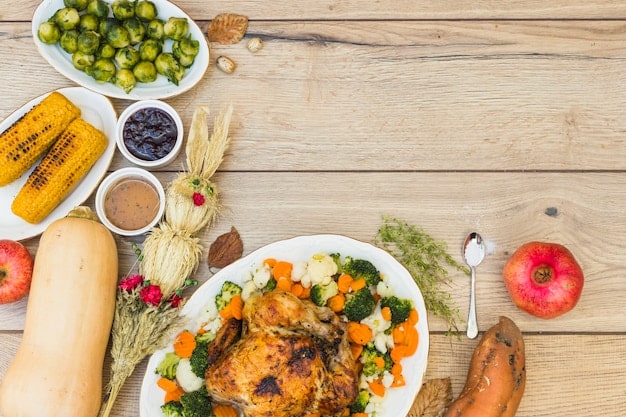
7-Day Meal Plan for Weight Loss in 2025 provides a structured, balanced approach to healthy eating, incorporating diverse, nutrient-dense foods while managing calorie intake to support effective and sustainable weight loss.
Embarking on a weight loss journey requires a strategic plan, and a well-structured **7-Day Meal Plan for Weight Loss: A Balanced Approach to Healthy Eating in 2025** is a fantastic starting point. This guide will provide you with the tools and knowledge to create a delicious and effective meal plan that supports your weight loss goals.
Understanding the Basics of a Weight Loss Meal Plan
Creating an effective weight loss meal plan starts with understanding the fundamental principles of nutrition and how your body utilizes energy. This involves considering macronutrients, micronutrients, and overall calorie intake to ensure you’re fueling your body properly while promoting weight loss.
Macronutrient Balance
Macronutrients—proteins, carbohydrates, and fats—are the building blocks of any diet. For weight loss, it’s essential to strike the right balance. Protein helps preserve muscle mass, carbs provide energy, and healthy fats support hormone production and overall health.
Calorie Control
To lose weight, you need to consume fewer calories than you burn. This deficit forces your body to tap into its fat reserves for energy. However, it’s crucial to avoid drastic calorie restrictions, which can lead to nutrient deficiencies and metabolic slowdown.
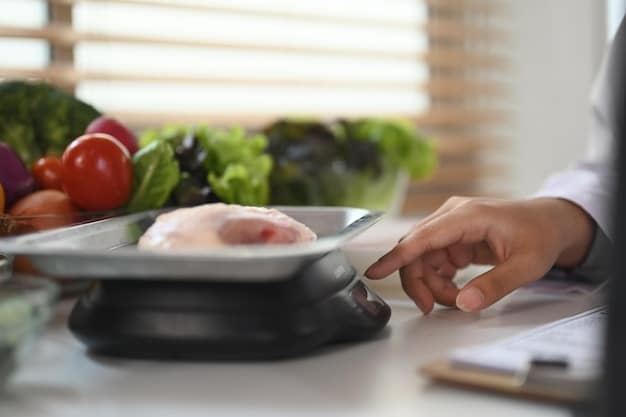
Here are some key considerations for creating your weight loss meal plan:
- Prioritize Protein: Aim for lean sources like chicken, fish, tofu, and legumes, which help you feel full and maintain muscle mass.
- Choose Complex Carbs: Opt for whole grains, vegetables, and fruits over refined grains and sugary snacks to provide sustained energy.
- Include Healthy Fats: Incorporate sources like avocados, nuts, seeds, and olive oil for overall health and satiety.
- Control Portions: Use measuring cups and food scales to track your intake accurately.
In summary, a successful weight loss meal plan requires a thoughtful approach to macronutrient balance and calorie control, ensuring you nourish your body while achieving your weight loss goals.
Planning Your 7-Day Weight Loss Meal Plan
Now that you have a solid understanding of the basics, let’s dive into how to create a 7-day weight loss meal plan. This involves setting realistic goals, selecting nutritious foods, and structuring your meals to optimize satiety and promote consistent weight loss.
Setting Realistic Goals
Before you start planning your meals, it’s crucial to set realistic and achievable weight loss goals. Aiming for gradual weight loss—about 1-2 pounds per week—is generally considered safe and sustainable.
Selecting Nutritious Foods
Choose a variety of nutrient-dense foods to ensure you’re getting all the vitamins and minerals your body needs. Focus on whole, unprocessed foods that are naturally low in calories and high in fiber.
Consider this list of foods when creating your weight loss meal plan:
- Lean Proteins: Chicken breast, turkey, fish (salmon, tuna), tofu, lentils, beans
- Fruits and Vegetables: Berries, apples, spinach, kale, broccoli, carrots
- Whole Grains: Quinoa, brown rice, oats, whole wheat bread
- Healthy Fats: Avocados, nuts, seeds, olive oil
Structuring Your Meals
Plan your meals to include a balance of protein, carbs, and fats at each sitting. This helps stabilize blood sugar levels, reduce cravings, and keep you feeling full for longer.

Consider the following tips for structuring your meals:
- Breakfast: Start your day with a protein-rich meal to kickstart your metabolism and reduce morning cravings.
- Lunch: Aim for a balanced meal that includes a lean protein, complex carbs, and plenty of vegetables.
- Dinner: Similar to lunch, focus on a balanced meal that’s lower in carbs but rich in protein and healthy fats.
- Snacks: Plan for healthy snacks between meals to prevent hunger and keep your energy levels stable.
By setting realistic goals, selecting nutritious foods, and structuring your meals effectively, you’ll be well on your way to creating a successful 7-day weight loss meal plan.
Sample 7-Day Meal Plan for Weight Loss
To give you a concrete idea of what a 7-day weight loss meal plan looks like, here’s a sample plan that incorporates the principles we’ve discussed. This plan provides approximately 1500-1800 calories per day, making it suitable for many individuals aiming to lose weight. Adjust portion sizes as needed based on your specific calorie goals.
Day 1
Start your weight loss journey with a nutritious and satisfying set of meals to set the tone for the week.
- Breakfast: Oatmeal with berries and a sprinkle of nuts
- Lunch: Grilled chicken salad with mixed greens and vinaigrette dressing
- Dinner: Baked salmon with roasted vegetables
- Snacks: Apple slices with almond butter, Greek yogurt
Day 2
Continue your plan with meals that are delicious and aligned with your weight loss goals.
- Breakfast: Scrambled eggs with spinach and whole wheat toast
- Lunch: Turkey and avocado wrap with a side salad
- Dinner: Lentil soup with a side of whole grain bread
- Snacks: Carrot sticks with hummus, a handful of almonds
Day 3
Mix it up with different flavors and textures to keep your meal plan interesting and prevent boredom.
- Breakfast: Greek yogurt with granola and sliced peaches
- Lunch: Leftover lentil soup
- Dinner: Chicken stir-fry with brown rice
- Snacks: A small banana, a hard-boiled egg
Day 4
Halfway through the week, maintain your focus with well-balanced and portion-controlled meals.
- Breakfast: Smoothie with spinach, banana, and protein powder
- Lunch: Quinoa salad with chickpeas and vegetables
- Dinner: Baked cod with steamed asparagus
- Snacks: Rice cakes with avocado, cottage cheese
Day 5
Incorporate some of your favorites while sticking to your nutritional guidelines.
- Breakfast: Whole wheat pancakes with berries and a drizzle of maple syrup
- Lunch: Leftover quinoa salad
- Dinner: Turkey meatballs with zucchini noodles
- Snacks: A small pear, a protein bar
Day 6
As the weekend approaches, continue making smart choices to stay on track.
- Breakfast: Breakfast burrito with scrambled eggs, black beans, and salsa
- Lunch: Tuna salad sandwich on whole wheat bread
- Dinner: Chicken fajitas with bell peppers and onions
- Snacks: Grapes, a protein shake
Day 7
Celebrate the end of the week with a satisfying and healthy meal plan.
- Breakfast: Oatmeal with nuts, seeds, and a drizzle of honey
- Lunch: Leftover chicken fajitas
- Dinner: Homemade pizza on whole wheat crust with lots of veggies
- Snacks: A small handful of trail mix, Greek yogurt with berries
This sample 7-day meal plan demonstrates how you can enjoy a variety of delicious and satisfying meals while staying within your calorie goals to support weight loss.
Customizing Your Meal Plan for Individual Needs
While a sample meal plan provides a great starting point, it’s important to customize it to fit your individual needs and preferences. Factors such as your activity level, dietary restrictions, and personal food preferences should all be taken into consideration.
Adjusting for Activity Level
Your activity level plays a significant role in your calorie needs. If you’re highly active, you’ll need more calories to fuel your workouts and support muscle recovery. On the other hand, if you’re mostly sedentary, you’ll need fewer calories to lose weight.
Addressing Dietary Restrictions
If you have dietary restrictions such as allergies, intolerances, or ethical considerations (vegetarian, vegan), it’s crucial to adapt your meal plan accordingly. Fortunately, there are plenty of delicious and nutritious alternatives available for nearly every food.
Incorporating Personal Preferences
The more you enjoy your meals, the more likely you are to stick to your meal plan. Don’t be afraid to experiment with different flavors, spices, and cooking methods to find what works best for you.
To customize your meal plan effectively, consider these questions:
- What are my daily calorie and macronutrient goals?
- What are my dietary restrictions or allergies?
- What are my favorite healthy foods and meals?
- How can I make my meal plan more enjoyable and sustainable?
By tailoring your meal plan to your specific needs and preferences, you can increase the likelihood of success and make the weight loss process more enjoyable.
Tracking Progress and Making Adjustments
Once you’ve started your 7-day weight loss meal plan, it’s important to track your progress and make adjustments as needed. Regular monitoring can help you stay motivated and ensure you’re on the right track toward your goals.
Monitoring Your Weight
Weigh yourself regularly—ideally once a week—to track your weight loss progress. Keep in mind that weight can fluctuate due to factors like hydration levels and hormonal changes, so don’t get discouraged by occasional plateaus.
Keeping a Food Journal
Tracking your food intake can provide valuable insights into your eating habits and help you identify areas for improvement. Use a food journal or a meal tracking app to record everything you eat and drink.
Adjusting Your Calorie Intake
If you’re not seeing the desired results, you may need to adjust your calorie intake. Re-evaluate your daily calorie goals and make small adjustments to your meal plan as needed.
Here are some signs that you may need to adjust your meal plan:
- You’re not losing weight after several weeks.
- You’re experiencing constant hunger or cravings.
- You’re feeling tired or sluggish all the time.
By tracking your progress and making adjustments as needed, you can optimize your meal plan for maximum effectiveness and achieve your weight loss goals.
Maintaining Long-Term Weight Loss
Losing weight is just the first step; maintaining that weight loss over the long term is the real challenge. To ensure your success, it’s essential to adopt sustainable lifestyle changes that support your new, healthier habits.
Focus on Sustainable Habits
Instead of viewing your weight loss meal plan as a temporary fix, think of it as a long-term lifestyle change. Focus on building sustainable habits that you can maintain for years to come.
Practice Mindful Eating
Pay attention to your body’s hunger and fullness cues. Eat slowly and savor each bite, and avoid distractions while eating. This can help you eat less and feel more satisfied.
Stay Active
Regular physical activity is crucial for maintaining weight loss. Aim for at least 150 minutes of moderate-intensity exercise or 75 minutes of vigorous-intensity exercise each week.
Consider these strategies for maintaining long-term weight loss:
- Continue to plan your meals in advance.
- Stay hydrated by drinking plenty of water.
- Get enough sleep (7-8 hours per night).
- Manage stress through relaxation techniques like yoga or meditation.
By adopting sustainable habits, practicing mindful eating, and staying active, you can maintain your weight loss and enjoy a healthier, happier life.
| Key Point | Brief Description |
|---|---|
| 🍎 Macronutrient Balance | Balancing proteins, carbohydrates, and fats is essential for a balanced diet. |
| 🥗 Nutritious Foods Selection | Focus on whole, unprocessed foods to ensure you get essential nutrients. |
| 📅 Meal Structuring | Structuring your meals to include protein, carbs, and fats at each serving. |
| 💪 Sustainable Habits | Adopt lifestyle changes that support your healthier habits for long-term success. |
Frequently Asked Questions
▼
A protein-rich breakfast, like oatmeal with berries and nuts, scrambled eggs with spinach, or a protein smoothie, can help kickstart your metabolism and reduce cravings throughout the day for weight loss.
▼
The ideal calorie intake varies based on factors like age, gender, and activity level. Generally, a deficit of 500-750 calories per day can lead to a weight loss of 1-2 pounds per week for many individuals.
▼
Yes, healthy snacks can be beneficial for weight loss. They help prevent hunger and stabilize blood sugar levels between meals, reducing the likelihood of overeating during lunch and dinner, thus promoting a well-balanced diet.
▼
Absolutely! It’s all about moderation and balance. You can enjoy your favorite foods in smaller portions or find healthier versions of them. The goal is sustainability, not deprivation, to promote a healthy relationship with food.
▼
Aim for at least 150 minutes of moderate-intensity exercise or 75 minutes of vigorous-intensity exercise each week. Regular physical activity complements your meal plan and enhances weight loss results effectively.
Conclusion
Creating and following a **7-Day Meal Plan for Weight Loss: A Balanced Approach to Healthy Eating in 2025** can be a game-changer in your weight loss journey. By understanding the basics of nutrition, planning your meals effectively, and customizing your plan to fit your individual needs, you can achieve sustainable and healthy weight loss results.
